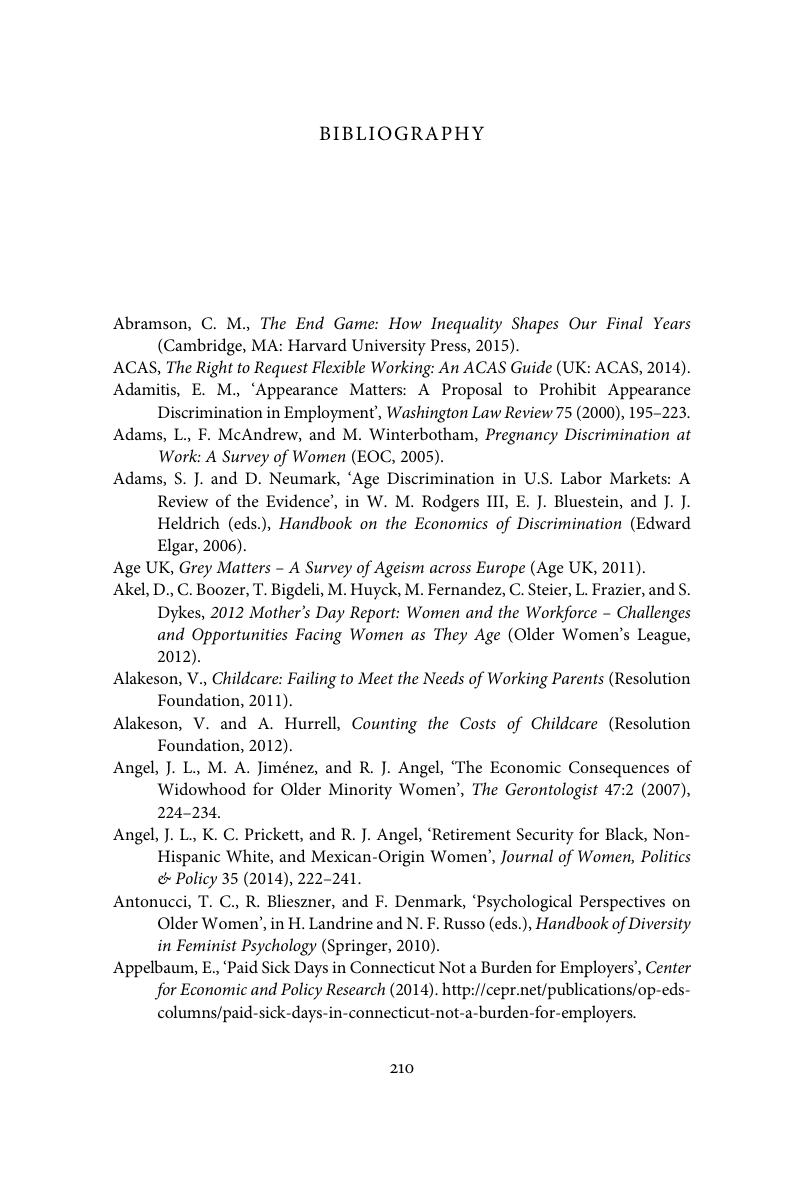Book contents
- Lifetime Disadvantage, Discrimination and the Gendered Workforce
- Lifetime Disadvantage, Discrimination and the Gendered Workforce
- Copyright page
- Dedication
- Contents
- Tables
- Preface
- Table of Cases
- Table of Legislation
- 1 Lifetime Disadvantage
- 2 Education and Training
- 3 Stereotyping and Multiple Discrimination
- 4 Caregiving and Career Outcomes
- 5 Glass Ceilings and Pay Inequality
- 6 Occupational Segregation and Non-standard Working
- 7 Pensions and Retirement
- 8 Beyond Lifetime Disadvantage
- Bibliography
- Index
- References
Bibliography
Published online by Cambridge University Press: 13 October 2016
- Lifetime Disadvantage, Discrimination and the Gendered Workforce
- Lifetime Disadvantage, Discrimination and the Gendered Workforce
- Copyright page
- Dedication
- Contents
- Tables
- Preface
- Table of Cases
- Table of Legislation
- 1 Lifetime Disadvantage
- 2 Education and Training
- 3 Stereotyping and Multiple Discrimination
- 4 Caregiving and Career Outcomes
- 5 Glass Ceilings and Pay Inequality
- 6 Occupational Segregation and Non-standard Working
- 7 Pensions and Retirement
- 8 Beyond Lifetime Disadvantage
- Bibliography
- Index
- References
Summary

- Type
- Chapter
- Information
- Lifetime Disadvantage, Discrimination and the Gendered Workforce , pp. 210 - 229Publisher: Cambridge University PressPrint publication year: 2016



